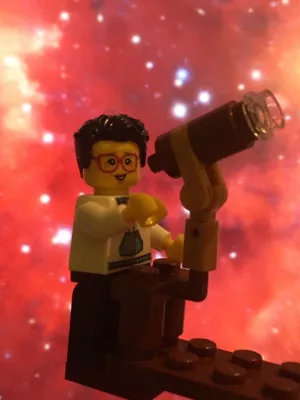
Henrik Hartman
Researcher (Leave of Absence)

The FERRUM Project: Experimental transition probabilities of [Fe II] and astrophysical applications
Author
Summary, in English
We report on experimental transition probabilities for thirteenforbidden [Fe II] lines originating from three different metastable FeIi levels. Radiative lifetimes have been measured of two metastablestates by applying a laser probing technique on a stored ion beam.Branching ratios for the radiative decay channels, i.e. M1 and E2transitions, are derived from observed intensity ratios of forbiddenlines in astrophysical spectra and compared with theoretical data. Thelifetimes and branching ratios are combined to derive absolutetransition probabilities, A-values.We present the first experimental lifetime values for the two Fe IIlevels a<SUP>4</SUP>G<SUB>9/2</SUB> and b<SUP>2</SUP>H<SUB>11/2</SUB>and A-values for 13 forbidden transitions froma<SUP>6</SUP>S<SUB>5/2</SUB>, a<SUP>4</SUP>G<SUB>9/2</SUB> andb<SUP>4</SUP>D<SUB>7/2</SUB> in the optical region. A discrepancybetween the measured and calculated values of the lifetime for theb<SUP>2</SUP>H<SUB>11/2</SUB> level is discussed in terms of levelmixing. We have used the code CIV3 to calculate transitionprobabilities of the a<SUP>6</SUP>D-a<SUP>6</SUP>S transitions.We have also studied observational branching ratios for lines from 5other metastable Fe II levels and compared them to calculated values. Aconsistency in the deviation between calibrated observational intensityratios and theoretical branching ratios for lines in a wider wavelengthregion supports the use of [Fe II] lines for determination of reddening.
Department/s
- Lund Observatory - Has been reorganised
- Atomic Physics
Publishing year
2003
Language
English
Pages
1143-1149
Publication/Series
Astronomy & Astrophysics
Volume
397
Issue
3
Full text
- Available as PDF - 210 kB
- Download statistics
Document type
Journal article
Publisher
EDP Sciences
Topic
- Astronomy, Astrophysics and Cosmology
Keywords
- atomic data
- stars: individual: Eta Carinae
- ISM: dust
- extinction
Status
Published
ISBN/ISSN/Other
- ISSN: 0004-6361

